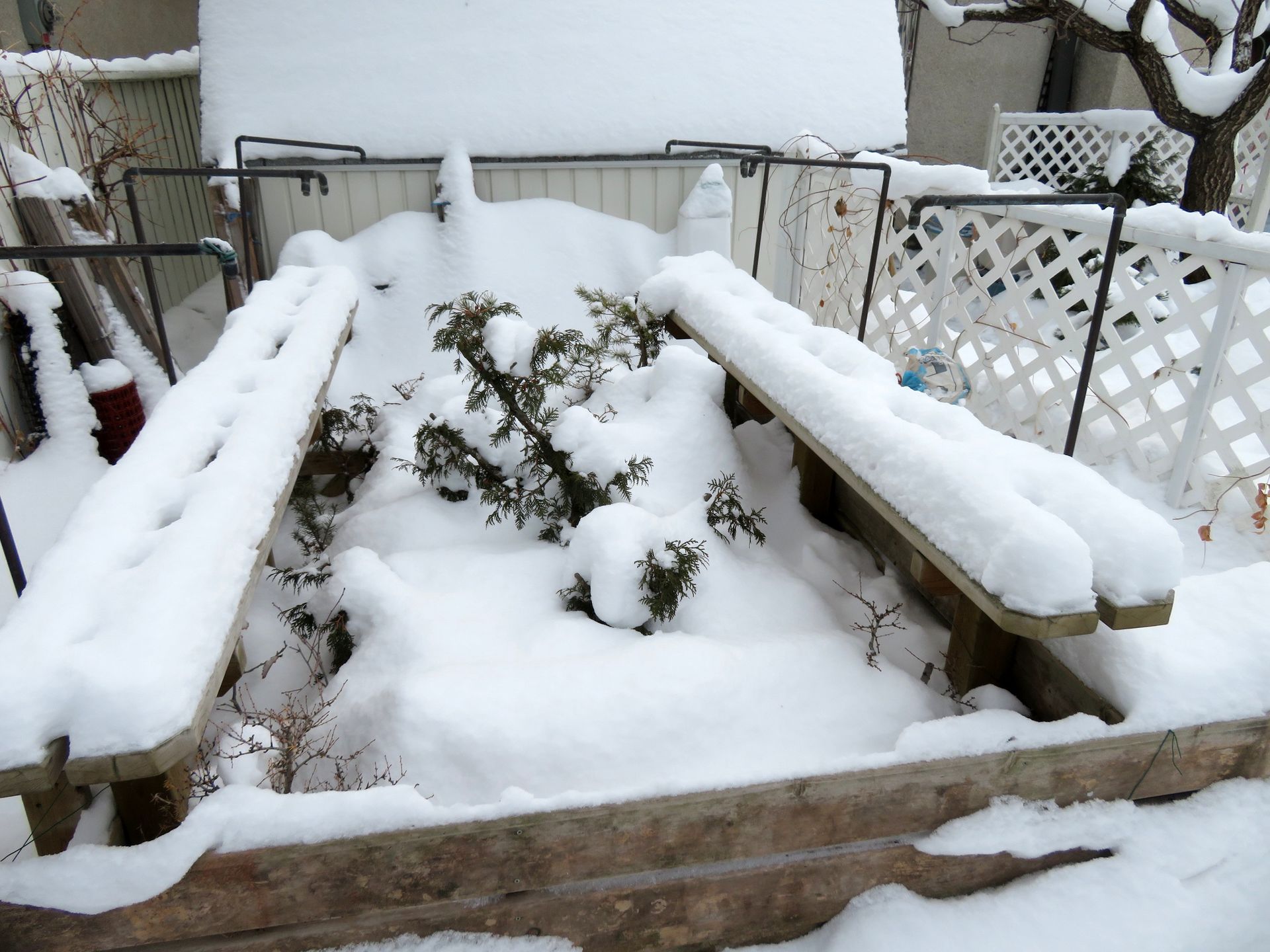
BONSAI IN ZONE 3
In Southern Manitoba, we have many tree choices, and members of the Bonsai Society of Winnipeg know what it takes to successfully grow various species here. We are pioneers in zone 3 Bonsai. Many of our practises and techniques apply to other areas of Canada in zone 3. Bonsai growers in zone 3 are challenged with a short growing season and a long, harsh winter. All our advice on this site is explicitly tailored to our climate, seasons, and geography.
BUYING TREES
Bonsai and potential Bonsai trees are readily available at local nurseries and garden centres. Some florist shops also carry “gift Bonsai” trees, and occasionally you will see small Bonsai in big box stores or home centres. Be very cautious when buying ready-made Bonsai trees. Buy them from a knowledgeable retailer that guarantees or provides expert care instructions.
COLLECTING TREES FROM THE WILD
Southern Manitoba is a great place to get trees from the wild. The club offers two guided field trips a year. One in the early spring, once the ground has thawed, and in the late fall, after the trees are dormant. Taking trees from provincial road allowances in the ditches and from the edges of logging roads in the provincial forests is legal. Be sure you have the owner’s permission if you are on private land. Don’t overlook overgrown shrubs in your garden. You may have a potential bonsai ready to style.
WEATHER IN SOUTHERN MANITOBA
Manitoba, midway between the Atlantic and Pacific coasts of North America, has a ‘continental’ climate characterized by extremes. (Too hot! Too cold! Too wet! Too dry! Usually windy!)
Koeppen’s Climate Classification (1997) lists Manitoba as COLD.
Long, cold, bright winters and warm, sunny, short summers are typical. Still, the weather is changeable, especially in spring and fall. The horticulture zones are 3a or 2b, depending on local conditions.
Protection is a basic for Manitoba bonsai enthusiasts, including especially:
- protection from sudden frosts in late spring or early fall
- protection from heavy rains, thrashing winds, and hail storms
- protection from the extreme summer heat
Protection during the long, cold winters varies according to the tree species.
OUTDOOR TREES
Winter-hardy trees are much easier for beginners to work with and look after. Popular species are winter-hardy tamarack (larch), jack pine, white pine, spruce, cedar, wild plum, hawthorn, and birch. We find these species growing in the ditches along road allowances all over southern Manitoba, where it’s legal to dig them out. The club guides outings in designated areas where members can harvest potential bonsai trees twice a year.
Other popular outdoor species which can be treated quite similarly are; mugho pine, birds nest spruce, dwarf Alberta spruce, juniper, Siberian elm, amur maple, Manitoba maple, cotoneaster, lilac and potentilla. Fruit trees such as crabapples and plums are also grown as Bonsai. These species can be purchased from Garden Centres and Retail Nurseries. The best time to buy is late fall, when end-of-season sales make them more affordable. Look for healthy trees with radiating surface roots, a thick, tapering trunk, and many low branches.
Winter hardy trees spend the winter in dormancy, outside in your garden, protected by mulch, snow, and windbreaks. Deprived of their dormant period, these trees soon peter out and die.
WINTER PROTECTION FOR OUTDOOR TREES
Manitoba-hardy trees (native trees, garden centre cultivars) must be buried or mulched to the rims of their pots into a sheltered, shaded corner of the garden. They must be covered with snow until the ground thaws in the spring. The transition between the summer/winter extremes in spring and autumn is gradual and uneven. Therefore, the Manitoba bonsai artist is always alert to the day’s conditions, especially the overnight forecasts, and must be prepared to react quickly in the event of sudden temperature drops or late/early frosts.
INDOOR TREES
Tropical trees can be grown indoors if you have a well-lit area in your home, with reasonable means to keep humidity levels high in winter. Popular species include Ficus (varieties with naturally smaller leaves), Serissa, Fuschia, Myrtle, Pomegranate, Bougainvillea, Jade, and Fukien tea. All trees are best kept outdoors in the summer, some in the shade, some in full sun.
If you live in an apartment without a balcony, tropical trees will be best for you. Look for tropical species that require moderate light and humidity and are as easy to keep as houseplants. Ficus varieties make good Bonsai under these conditions.
During our long winter, tropical trees do best under grow lights. The best light sources are full-spectrum LED lights. Bright window sills facing south or west will provide enough light for many species. However, additional lighting is beneficial, especially during winter. An east window in a cool room or a north window can provide a cool area to site the sub-tropical trees for their rest period. In all cases, humidity levels can be maintained by daily misting and/or keeping the tree above, not in, a tray filled with water and gravel.
MOVING TROPICAL TREES OUTDOORS
Tropical trees must be acclimated to full sunlight when moving them outdoors for the summer. For the first few days, place the trees outside in full shade but bring them in at night to avoid the cool nights and the unexpected frosts. Slowly introduce the trees to more light over a few more days, bringing them in at night until the danger of a late frost is over. You can leave the trees out full-time when the nights are warmer. In early September, as the nights get cold, bring the trees in at night and return outside during the days. Do this until the days become too cold for the trees. Different species will tolerate different temperature ranges. Become familiar with your trees’ specific requirements and keep your eye on the weather.
REST PERIOD FOR SUB-TROPICAL TREES
Sub-tropical trees need a cool rest area when you bring them indoors. Hold back on fertilizer for a few months. Then provide more light, warmth, and humidity, and start fertilizing again when you see signs of new growth. The club can provide suggestions on creating this cool rest environment, depending on your circumstance.


